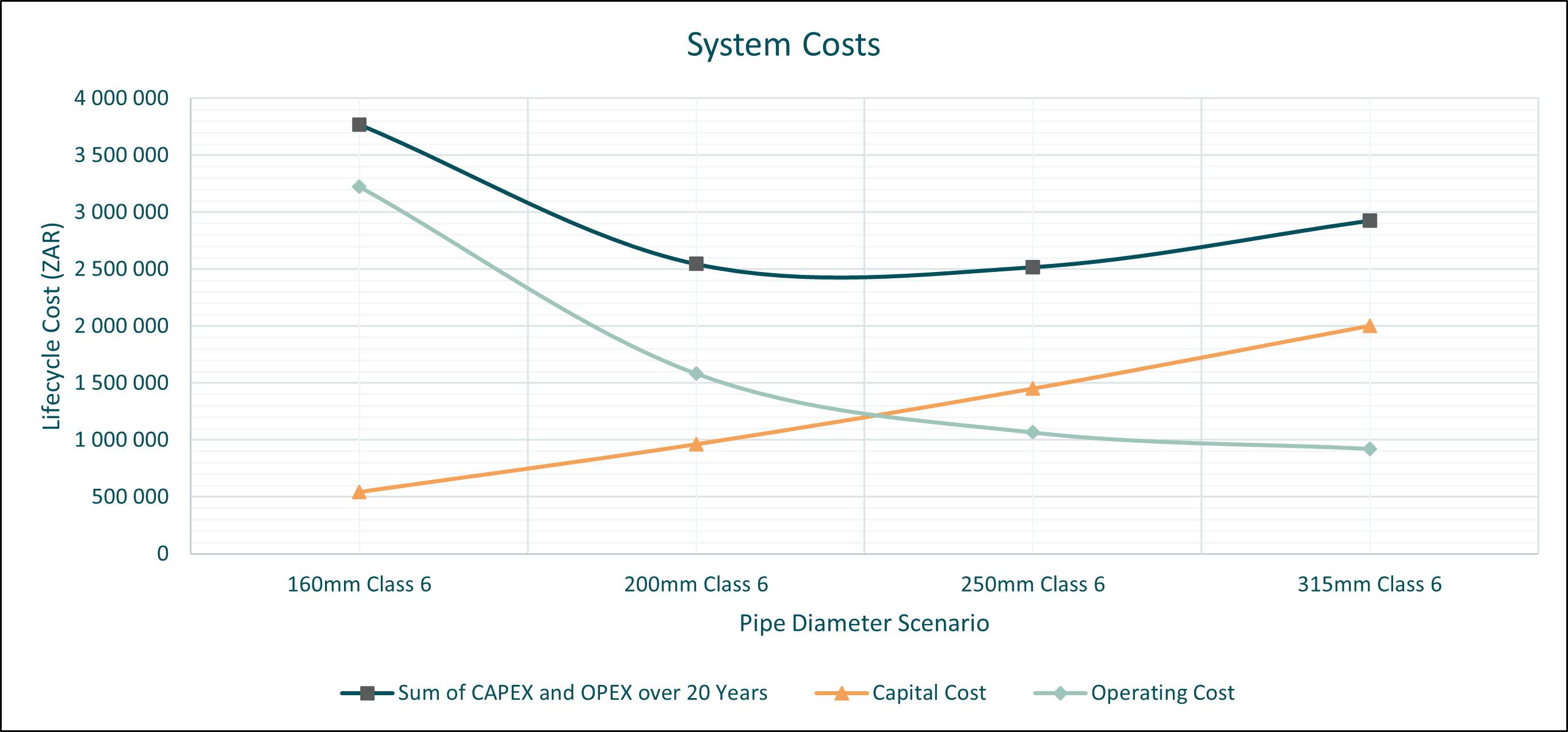What does lifecycle cost optimization actually mean in the real world?
Lets set the scene with a case study that would be typical in irrigated agriculture.
Background information:
- 1x 50 ha Center Pivot
- 8 mm Sprinkler Pack
- Total Gross Application of 800 mm/year
- 22 hr Rotation for Full Application
- Instantaneous Flow Rate = 181.8 m³/hr
- Static Head = 10 m
- Pipe length = 1 000 m from water source.
Assuming that the pivot location, size and application rate are fixed, the only choices remaining in the design are the size and configuration of the pipes and the pumps.
These are critical choices when it comes to the overall cost of the system.
As a rule, big pipe + small pump = system that is expensive to install (High CAPEX).
Conversely, small pipe + big pump = cheap system (Low CAPEX).
BUT, this is not the whole picture. A small pipe results in more friction. This means that we need a bigger pump with a higher power consumption, therefore higher operating costs (High OPEX).
A bigger pipe results in less friction, requiring a smaller pump with a lower power consumption, therefore low operating cost (Low OPEX).
For every system, there is a sweet spot where the sum of the CAPEX and OPEX over the system lifetime is the lowest possible - see the below analysis for the pivot system described previously.

As the capital cost of the system increases, the operating cost decreases. However, eventually the benefit of the reduced operating cost is outweighed by the increased capital cost.
Lifecycle cost analysis is finding the sweet spot for each unique system. For this particular pivot, the optimum is a 250mm Class 6 pipe.
Each system has a different optimum combination of capital and lifetime operating cost, depending on the cost of materials, transport of materials and power. The only constant is that cheap up front hurts long term.
Drop us a line to see how we can help you find your optimum operating points and reduce your system lifecycle costs.

